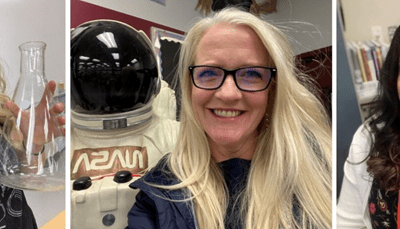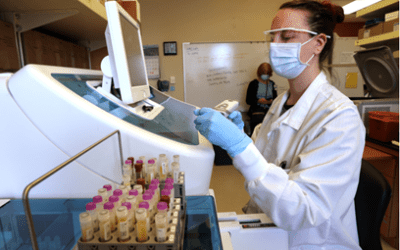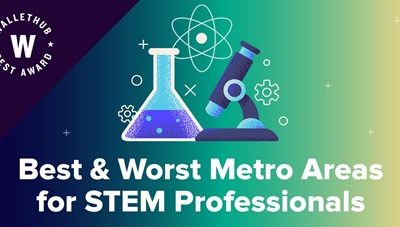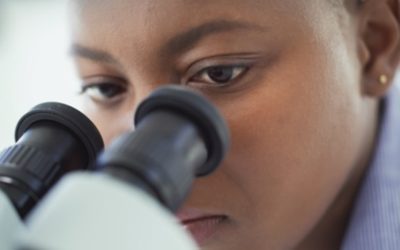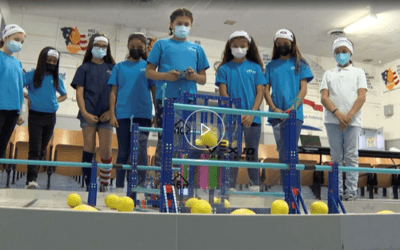STEM Data Center
Providing the STEM Universe with Actionable Data
STEM Global Action in Your Community
STEM Global Action at Home
Latest News
Diversity and STEM: Women, Minorities, and Persons with Disabilities
The National Center for Science and Engineering Statistics (NCSES), which is part of the U.S. National Science Foundation, released a new study on diversity and STEM. It provides a comprehensive analysis of the trends impacting people of color, women and people with disabilities in STEM education and employment. NSF Director Sethuraman Panchanathan says: “The Diversity and STEM report provides objective, reliable data on where our nation has made progress towards access and equity in STEM education and careers, as well as where we must do more.”
INVERSE: New Research Finds Disturbing Pattern of Discrimination at the Highest Levels Of STEM
Gender disparities have appeared again and again across different fields of science. And they disproportionately affect women of color. But for any science enthusiast from a marginalized background who wonders whether or not to pursue a STEM career, quantitative sociologist Yasmiyn Irizarry offers some wisdom. “Life is just a little bit easier when we’re doing what we love,” Irizarry tells Inverse. Irizarry is an African and African Diaspora Studies professor at the University of Texas at Austin and belongs to the Cite Black Women collective created in 2017 by social anthropologist Christen Smith. This organization seeks to bring attention to how often intellectual contributions by Black women go unacknowledged and are effectively erased in citational indices.
Why Tinkering is Important for Kids
According to a new study, children think they have less access to common measurement tools and toys around the house than their parents do. This was the unexpected result Megan Ennes and co-investigator Gail Jones discovered just before launching a year-long program to boost science engagement among minority and low-income families in the southeastern U.S.
New study confirms: Structural racism in STEM programs needs fixing
A groundbreaking paper published last month in PNAS Nexus, a sibling journal to the Proceedings of the National Academies of Science, offers stark quantitative data showing the continued blight of structural racism in academic STEM (science, technology, engineering and mathematics) programs in the United States. Using a massive dataset of 110,000 students across six large research universities, the study found that white males are still more likely than other groups to earn STEM-related degrees even when they have a poorer academic record. Just as important, the study controlled for the high school preparation of students who intended to study STEM, assuming average grade points of 3.57 and ACT composite scores of 26 (placing students in the 83rdpercentile).
Low Grades in intro STEM Courses may Disproportionally Deter Minority Students
Receiving a grade of C or lower in introductory science, technology, engineering, and math (STEM) classes — courses like calculus or general chemistry — makes it less likely for underrepresented minority students to earn a degree in these subjects compared to white students with similar educational backgrounds. A team of researchers, led by Penn State scientists, examined records of 109,070 students from six large, public, research-intensive universities between 2005 and 2018, showing that a low grade in even one of these courses disproportionately impacted underrepresented minority students.
STEM Education
STEM education superstars: Meet 3 inspiring teachers honored at the GeekWire Awards
In school districts large and small across Washington state, hardworking educators are inspiring a future CEO of the Year or grooming the Next Tech Titan. And we’ve selected three exemplary teachers to honor with our STEM Educator of the Year category at this year’s GeekWire Awards.
Chinese, Indian STEM PhD graduates in the US ‘stay long after graduation’
Studyinternational.com: New data has emerged that shows the US is becoming an increasingly popular destination for post-study work opportunities, particularly for graduates with a STEM education.
A Century After Einstein is STEM Education Really Breaking Barriers?
DailyPrincetonian: Jadwin Hall, the blockish brick behemoth on Washington Road, has been home to the Princeton math and physics departments since 1970. While the building itself underwent renovations as part of Princeton’s sustainability plan, Jadwin still embodies the remnants of an older worldview that has characterized STEM culture at Princeton since Albert Einstein’s time as a lecturer in 1921.
Higher Education Online Learning Leaps During Pandemic
Insidehighered.com: The COVID-19 pandemic has led to a stunningly rapid transformation in how and where undergraduate students learn. In the span of a year, the number of students taking courses online across about 2,200 colleges and universities increased by 93 percent. The embrace of online learning is very likely to continue: more than half of this large sample of institutions expected to continue to deliver some or all of the courses they’d shifted online via distance education after the pandemic
How a Rural Tribe Uses STEM to Support Traditional Practices
In 2019, a group of eager tribal members approached the Waccamaw Siouan leaders, proposing the start of a STEM education initiative in the tribal community called STEM Studio. The most recent initiative allowed these tribal leaders to connect the growing need for STEM education with its traditional tribal practices for students.
STEM Employment
These are the Highest – and Lowest-paying STEM Jobs in the U.S.
CNBC.com: Careers in the STEM fields — jobs that emphasize science, technology, engineering or math — have been some of the fastest growing and best paid jobs in the U.S. for decades, and, due to the Covid-19 pandemic, that trend is likely to accelerate as more people spend more time living and working online.
Seattle Region is No. 1 in U.S. in Ranking of Best Cities for STEM Jobs
The Seattle region topped 100 U.S. metro areas in a new ranking of the best and worst places for professionals in STEM jobs. The comparison by the personal finance website WalletHub measured the Seattle-Tacoma-Bellevue area across 19 key metrics, ranging from percentage of workforce in STEM; STEM employment growth; median wage for STEM workers; quality of engineering universities; and more.
Women Are Choosing Careers in STEM When Returning to the Workforce During Post-Pandemic ‘Great Reevaluation’
According to a recent MetLife survey, 48% of women said the pandemic has negatively impacted their careers, and 63% who left the workforce during this period say they are ready to return. Eight in 10 of those are considering careers in STEM, reflecting a shift in the paradigm from the “Great Resignation” to the “Great Reevaluation,” according to the survey.
GAO Study – Financial Services Industry: Factors Affecting Careers for Women with STEM Degrees
Several factors affect women's participation in Science, Technology, Engineering, and Math (STEM) degree programs and subsequent careers in the financial services industry, according to research and stakeholders GAO interviewed. These factors include young girls' early exposure to STEM topics, access to resources such as computers and high-speed internet, and a sense of whether they belong in STEM degree programs. Women's interest in a financial services career also may be affected by the presence of role models and awareness of job opportunities. In recent years, women have represented roughly 30 percent of financial services industry workers with STEM degrees (see figure).
Measuring Progress (and gaps) in the US Skilled Technical Workforce
In fall 2021, the National Science Board and the National Center for Science and Engineering Statistics, or NCSES, made an important change to how they describe and quantify the STEM workforce. In the Science and Engineering Indicators report, The STEM Labor Force of Today: Scientists, Engineers, and Skilled Technical Workers, NSB and NCSES provided for the first time data on all people who use science skills in their jobs, not just those with a bachelor's or advanced degree. Using this more expansive definition, the science workforce represented 23% of the total U.S. workforce in 2019.
STEM Disparities
Science News: STEM’s racial, ethnic and gender gaps are still strikingly large
A new report highlights the racial, ethnic and gender gaps in representation among STEM students and professionals.
Crucial Steps We Can Take To Achieve More Diversity In STEM
Despite the considerable growth in STEM industries, Black and Hispanic workers are still vastly underrepresented in STEM fields. Progress for women of all races is uneven, too. Recent research also indicates that degree attainment in these fields will increase diversity over time, but there is still more work to do — especially across the globe.
Diversity in Cybersecurity: Barriers and Opportunities for Women and Minorities
Increasing the numbers of women and minorities in cybersecurity isn't just good for the individuals involved, it's good for the practice of security. Here's a look at what's holding them back and what can be done about it.
Pew Research Center: Black Americans’ Views of and Engagement with Science
A new Pew Research Center survey takes a wide-ranging look at Black Americans’ views and experiences with science, spanning medical and health care settings, educational settings, and as consumers of science-related news and information in daily life. Black Americans have largely positive views of medical researchers’ competence; majority concerned about the potential for misconduct.
STEM Achievements
Biophysical Chemist Exposes Children to STEM careers: 7% of Graduates with STEM degrees are Black
Spectrum: Ketanji Brown Jackson made history when the Senate voted to confirm her to the U.S. Supreme Court. For the first time ever, Black girls and women will see someone on the court that looks just like them. Brown Jackson’s achievements highlight the importance of representation regardless of career path.
Howard University Students Tayla Hunter and Katelyn Robertson are Awarded Prestigious Goldwater Scholarship for STEM
Two Howard University biology majors, Tayla Hunter and Karsh STEM Scholar Katelyn Robertson, have been named 2022 Goldwater Scholars. Congress established the Barry Goldwater Scholarship and Excellence in Education Foundation in 1986 to serve as a living memorial to honor the lifetime work of Sen. Barry Goldwater. Goldwater Scholarships are awarded to college sophomores and juniors who intend to pursue research careers in the natural sciences, mathematics and engineering.
Los Angeles All-girl Robotics Team Encouraging More Girls to Engage in STEM
An elementary school in the valley is celebrating its first all-girl robotics team. The fourth and fifth grade students at Vintage Magnet Elementary School in North Hills are ranked 109 in the world and have two excellence awards, which is the highest award given at the competition.
Fast Company: I am a Black female CEO, and this is how I redefined the white men’s club in tech
The first female CEO of SMASH explains the lessons she learned from being the only (or one of very few) Black woman in STEM from school to the workplace. By Danielle Rose
14-year-old Goleta, CA Student Wins $3,500 in Nation’s Premier STEM Competition
14-year-old Goleta student, Eamon Gordon just won $3,500 in a nationwide STEM competition for his study on how lengthening consonants in similar sounding words affects the listener's understanding of the words. This is the first-place mathematics award in the Broadcom MASTERS, the nation's premier middle school STEM competition.






